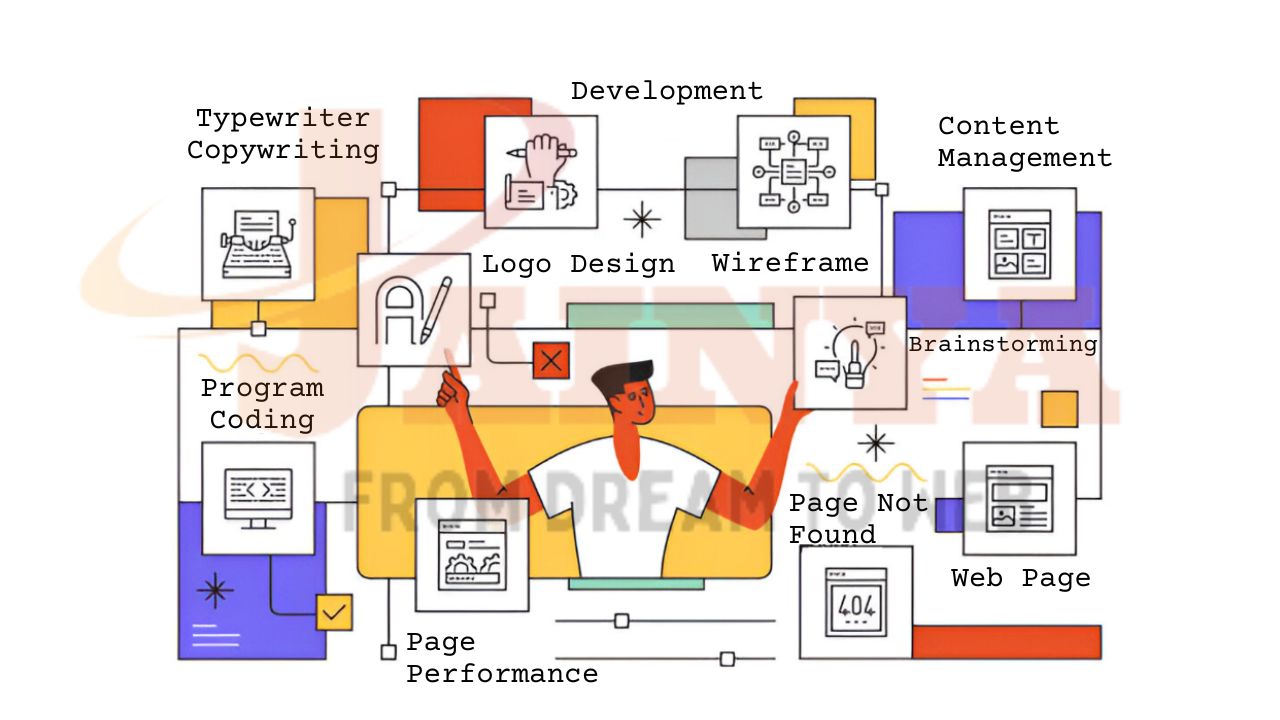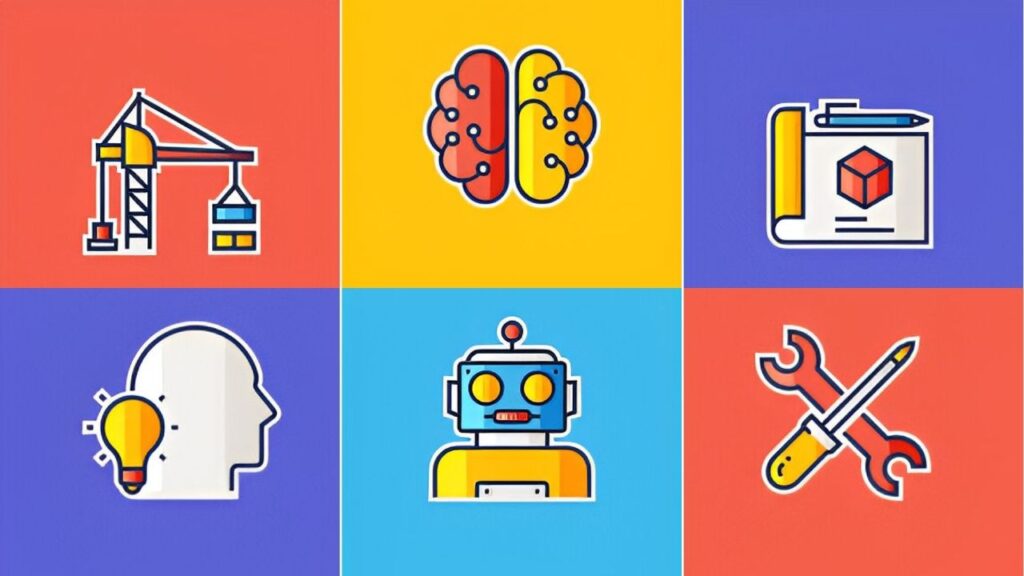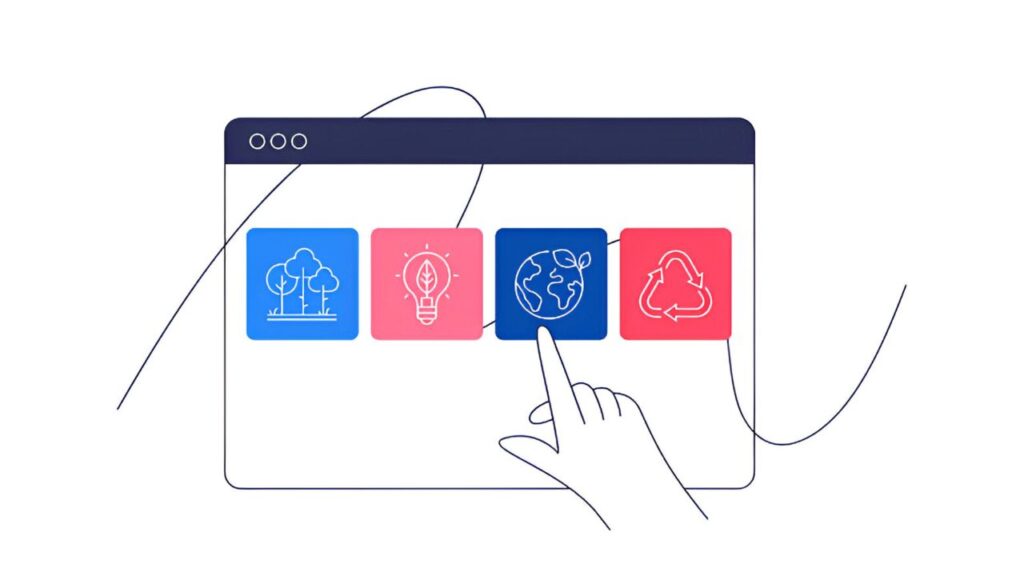Discover the top 2025 trends in web development and why hiring a future-ready website developer agency is essential for your business growth and digital success.

The digital world is changing very quickly, and 2025 will be a very important year for web development. As companies depend more and more on their online presence to prosper, the need for developers who think ahead has never been greater. The developers you select today will decide if your website does well or goes out of style in the competitive market of the future.
There was a time when a simple website was all you needed. People today want digital experiences that are fast, safe, good for the environment, and operate well on all devices. It is the developers that know how to meet these changing needs and have the abilities to do so who will protect your business in the future.
This detailed study looks at the four most important trends that will change web development in 2025. It will help you figure out what abilities and attitude you need in your next developer hiring. These developments are more than just technical breakthroughs; they are big changes in the way we think about digital experiences. For example, AI-powered automation and sustainable coding techniques are two examples.
AI & Automation: The New Developer Toolkit

Artificial intelligence is no longer just a term; it’s becoming an important tool for current developers. The best developers in 2025 won’t be the ones who are afraid about AI taking their jobs; they’ll be the ones who have learned how to work with AI to make their skills far better.
1. The AI-Augmented Development Process
Smart developers are using AI technologies like GitHub Copilot, ChatGPT, and coding assistants that are made just for them to speed up their work. These tools can do repetitious coding jobs, offer improvements, and even write whole functions based on descriptions in plain English. The actual value, though, isn’t in the AI itself, but in the developer’s ability to properly manage, improve, and combine these AI-generated solutions.
When looking for new employees, seek for engineers who can show how they use AI to improve their problem-solving skills instead of replacing them. They should be able to explain how they check the quality of AI-generated code, make it work for certain situations, and keep the quality of the code high even when they are working faster.
2. Automated Testing and Quality Assurance
Because current web apps are so complicated, they need strong testing frameworks that can keep up with fast development cycles. Developers that are ready for the future know that automated testing is not an option; it’s necessary to keep things reliable at scale.
Developers who are moving forward are leveraging tools like Jest, Cypress, and Playwright to do full testing that includes unit tests, integration tests, and end-to-end tests. They’re also using AI-powered testing tools that can automatically create test cases, find edge cases, and guess where things might go wrong before they affect people.
These developers know how to blend automation with planned manual testing, which is even more critical. They recognize when human insight is essential and can create testing workflows that use the speed of automation and the deep understanding that only human testers can give.
3. Intelligent Performance Optimization
AI is changing the way developers think about improving performance. Forward-thinking developers are starting to use smart bundling, automatic image optimization, and predictive loading as regular procedures. They are employing machine learning algorithms to look at how users act and then change how they distribute material to make it better.
In 2025, the top developers will be those who can employ adaptive loading tactics that change in real time based on network conditions, device capabilities, and user preferences. They know how to use edge computing and AI-driven content distribution networks to make sure your site operates well no matter where users are accessing it from.
4. Code Generation and Low-Code Integration
AI-powered code creation tools are transforming the way developers do everyday chores. This doesn’t mean that there aren’t any good coders out there; it just means that architectural thinking and strategic problem-solving are even more important.
When needed, developers that are ready for the future can easily combine low-code and no-code solutions while still being able to write bespoke code when necessary. They know the pros and cons of quickly deploying something and keeping it up to date over time. This helps firms decide when to use automation and when to buy custom solutions.
Mobile-First Design: Why It’s Still King

Mobile-first design is still changing, even if it is a well-known idea. It will still be the most important part of effective web development in 2025. Your developers need to know that mobile-first is more than just responsive design; it’s about completely changing the way people interact with digital experiences.
1. Beyond Responsive: Adaptive and Progressive Design
Mobile-first developers these days do a lot more than just include responsive breakpoints. They’re making experiences that change based on more than simply screen size. They also change based on the device’s capabilities, the network conditions, and the user’s environment. This implies using progressive improvement tactics to make sure that basic features run on the simplest devices while giving better experiences on more powerful gear.
The best developers know how to make Progressive Web Apps (PWAs) that work like both web and native apps. They can make experiences that seem like they’re part of the native app while keeping the benefits of web apps in terms of accessibility and discoverability. This includes adding things like the ability to work offline, push alerts, and navigation patterns that are similar to those in apps.
2. Performance-Oriented Mobile Development
More and more, mobile consumers don’t like websites that take a long time to load, therefore it’s important for any developer you hire to know how to optimize performance. Future-ready developers know how to optimize mobile performance in all its forms, from using smart lazy loading techniques to making sure Core Web Vitals are as good as they can be.
They know how to use advanced methods including prioritizing key resources, implementing service workers for caching tactics, and delivering assets in the best way possible. More significantly, they know how to employ real user monitoring (RUM) data to measure and keep an eye on mobile performance instead of just utilizing synthetic testing.
3. Touch-First User Interface Design
The greatest mobile-first developers don’t just think about how people use their desktops. They know how to make touch interfaces work well, like how to set the right size for touch targets, how to use gestures to navigate, and how to provide haptic feedback. They can make touch device interfaces that are easy to use for people with varying motor skills while still feeling natural.
This means knowing how to make gesture controls work well without making things less accessible, designing forms that are easy to use with touchscreens, and optimizing for one-handed use patterns that are similar to how people really use mobile devices.
4. Cross-Platform Compatibility and Testing
Because there are so many different types of mobile devices and operating systems, it’s important to have thorough testing plans. The developers you hire should know how to test devices that aren’t just popular ones, but also older ones and new form factors.
They should know what different mobile browsers, operating system versions, and manufacturer customizations mean for their devices. This includes knowing how to deal with device-specific peculiarities and make sure that experiences are the same across the wide range of mobile devices.
Security First: Protecting International Sites

As cyber threats get more advanced and rules get stricter, it’s not simply a good idea to be security-conscious when developing software—it’s also required by law and financially important. The developers you hire in 2025 must not see security as an afterthought, but as a key part of their work.
1. Privacy Compliance and International Regulations
Jainya Web developers today have to deal with a growing number of complicated privacy laws, such as GDPR, CCPA, and new laws that are being made around the world. Developers who are ready for the future know how to apply privacy-by-design principles to make sure they follow the rules without hurting the user experience.
This includes setting up the necessary processes for managing consent, minimizing data, and giving users rights like being able to move or delete their data. They should be able to design systems that can change to meet new privacy needs without having to start from scratch.
2. Advanced Authentication and Authorization
The growth of remote work and global user bases calls for more advanced ways to verify identity. The top developers know how to use new authentication methods including passwordless authentication, multi-factor authentication, and zero-trust security models.
They know how to use OAuth 2.0, OpenID Connect, and new standards like WebAuthn for biometric authentication. More significantly, they know how to build authentication flows that are both safe and easy for users to use by balancing security needs with user experience.
3. Data Protection and Encryption
As online applications handle more and more sensitive data, it’s important to use the right encryption and data protection methods. Future-ready developers know how to handle data safely, how to encrypt it when it’s not being used, and how to manage keys properly.
They can employ end-to-end encryption when it makes sense, know what different encryption algorithms mean, and build systems that keep user data safe from the time it is created until the time it is deleted. This means knowing how to work with sensitive data in development and testing environments without putting security at risk.
4. Security Monitoring and Incident Response
Web applications now need to have proactive security monitoring as a standard feature. The developers you choose should know how to set up security monitoring tools, create alarm systems that work, and make logging plans that help you find and deal with security problems.
They should know how to stop typical types of attacks like SQL injection, cross-site scripting (XSS), and cross-site request forgery (CSRF). More significantly, they need to know how to create systems that fail safely and can swiftly get back on track after a security breach.
Sustainable Web Development: Eco-Friendly Choices

In web development, being aware of the environment is no longer an option. More and more people are becoming aware of the internet’s carbon footprint, and businesses are looking for developers who can make digital experiences that are both efficient and environmentally friendly, in line with their corporate social responsibility aims.
1. Carbon-Conscious Code Architecture
The most forward-thinking developers know that how well their code runs has a direct effect on how long the environment will last. They write code that uses fewer server resources, uses algorithms that work well, and processes data that isn’t needed as little as possible.
This means knowing how to write database queries that don’t put too much pressure on the server, using caching solutions that cut down on unnecessary processing, and building apps that can grow without using more resources at the same time. They can use tools that keep track of energy use and emissions to measure and improve the carbon footprint of their apps.
2. Green Hosting and Infrastructure Choices
Sustainable development goes beyond coding to include judgments about infrastructure. Developers that are ready for the future know how to choose hosting companies based on how much renewable energy they use, how they offset their carbon emissions, and how their business affects the environment as a whole.
Jainya makes smart choices about cloud services, server locations, and content delivery networks that have the least impact on the environment while yet meeting performance needs. This means knowing how the regional distribution of resources impacts both performance and the environment.
3. Efficient Asset Management and Optimization
Digital assets have a big effect on the environment for most websites. Skilled developers know advanced optimization techniques that cut file sizes by a lot without hurting quality.
This means employing new picture formats like WebP and AVIF, compressing videos in a way that uses less data, and planning how to transmit assets in a way that uses less bandwidth. They know how to use progressive image loading, efficient font loading, and asset bundling to make online apps have less of an impact on the environment as a whole.
4. Sustainable Design Principles
The developers who care the most about the environment know how their design choices affect how much resources they use. They can work with designers to make dark mode interfaces for OLED displays that use less energy, simple designs that use fewer resources to produce, and animations that use less computing power.
Jainya knows how different UI frameworks affect the environment and can choose the best technology depending on how well it performs and how much resources it needs. This involves knowing how to add features that encourage users to behave in a way that is good for the environment, including auto-logout methods and form designs that make it easier for the server to process data.
5. Measuring and Monitoring Environmental Impact
The Jainya team always offers To be sustainable, development needs to be measured and improved all the time. The finest developers know how to use tools like the Website Carbon Calculator, EcoGrader, and bespoke monitoring solutions to keep an eye on how their apps affect the environment.
They can build up systems to keep an eye on energy use, set carbon budgets for development initiatives, and make reporting tools that help businesses understand and talk about how their digital activities affect the environment. More importantly, they may utilize this information to make smart choices about how to enhance and optimize things.
Future-Proofing Your Development Team

As these trends change the way the web is built, the Jainya developers you choose today will decide how well you do online tomorrow. Look for people who not only know how to use technology well, but also how to adapt, care about the environment, and understand how technological trends may help businesses reach their goals.
In 2025, the best company will be able to find a balance between cutting-edge innovation and practical implementation, security needs and user experience, and fast development and long-term habits. They see AI as a useful partner instead of a danger, they know that mobile-first design is always changing and going beyond just being responsive, and they know that security and sustainability are not optional extras but must-haves.
1. Evaluating Future-Ready Developers
When clients bring potential agency like Jainya, look for signs that they are always growing and changing. We inform him about how we’ve used AI tools, how they optimize mobile performance, what we know about privacy laws, and how we plan for sustainable development.
The best firm Jainya will be able to talk about genuine projects where they’ve used these trends, explain the trade-offs they’ve made, and show that they can meet a lot of different needs while still providing great user experiences.
2. Building a Sustainable Development Culture
Keep in mind that picking an agency that is equipped for the future is only the first step. For long-term success, it’s important to build a culture that encourages ongoing learning, trying new things, and eco-friendly activities. Encourage your team to keep up with new trends, give them chances to learn new skills, and reward new ideas that are good for the environment and help the firm reach its goals.
Businesses who are prepared to invest in the proper people and methods will have more chances than ever in the web development world of 2025. If you focus on these four important trends—AI integration, mobile-first design, security awareness, and sustainable development—you’ll put together a development team that can make digital experiences that not only fulfill the needs of today but also adapt to the problems of tomorrow.
Jainya developers who know that effective web development isn’t only about writing code but also about making digital experiences that are safe, long-lasting, and smart that meet both company goals and the demands of society as a whole will be the ones that succeed in the future. Make sure the person you hire next is ready for the future.

Leave a Comment